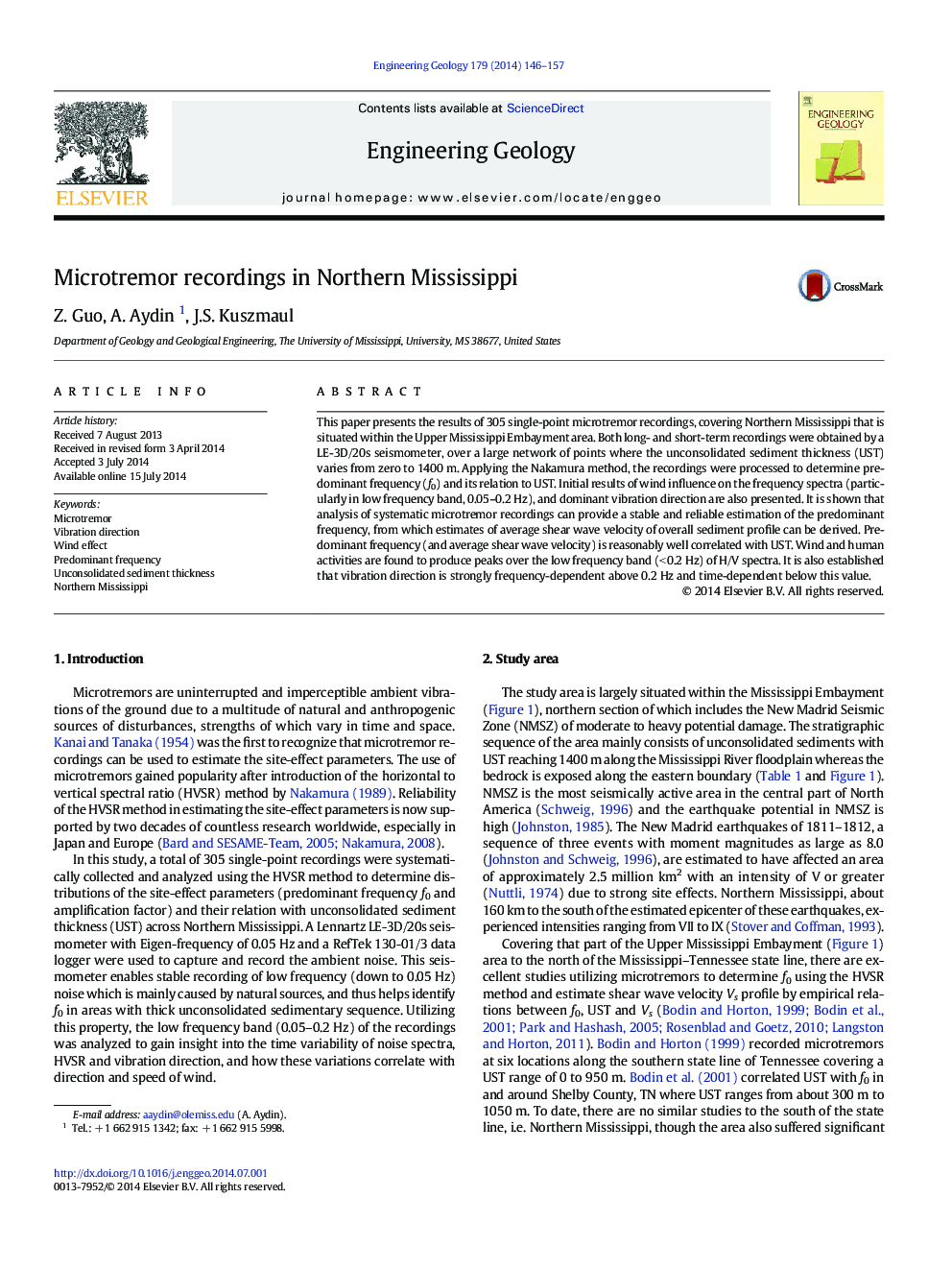| Article ID | Journal | Published Year | Pages | File Type |
|---|---|---|---|---|
| 4743551 | Engineering Geology | 2014 | 12 Pages |
•Microtremor recordings provide stable and reliable estimation of predominant frequency.•Wind and human activities dominate the recordings in the low frequency range.•Predominant frequency correlates well with unconsolidated sediment thickness.•Average shear velocity can be predicted from predominant frequency.
This paper presents the results of 305 single-point microtremor recordings, covering Northern Mississippi that is situated within the Upper Mississippi Embayment area. Both long- and short-term recordings were obtained by a LE-3D/20s seismometer, over a large network of points where the unconsolidated sediment thickness (UST) varies from zero to 1400 m. Applying the Nakamura method, the recordings were processed to determine predominant frequency (f0) and its relation to UST. Initial results of wind influence on the frequency spectra (particularly in low frequency band, 0.05–0.2 Hz), and dominant vibration direction are also presented. It is shown that analysis of systematic microtremor recordings can provide a stable and reliable estimation of the predominant frequency, from which estimates of average shear wave velocity of overall sediment profile can be derived. Predominant frequency (and average shear wave velocity) is reasonably well correlated with UST. Wind and human activities are found to produce peaks over the low frequency band (< 0.2 Hz) of H/V spectra. It is also established that vibration direction is strongly frequency-dependent above 0.2 Hz and time-dependent below this value.
